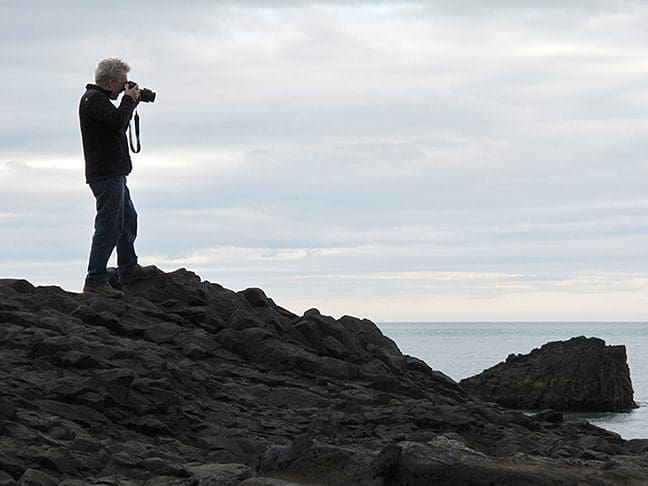
Combining incredible technical skill and creative imagination, photographer Tom Chambers carefully constructs images that blend reality and fantasy. Each dreamlike photomontage, often inspired by the artist’s travels, evokes a mood and has a deeper story to tell. An underlying theme in Chambers’ work is a concern for the environment, as well as the kindred connection shared by humans and animals.
Learn more about the inspiration behind Tom Chambers’ work below.
How do you describe your work, and what do you hope others see in it?
TC: As an artist I express myself through the medium of photography and more specifically, the categories of photomontage, manipulated, or constructed photography. Three words to describe my photography are emotional, graphic, and narrative. The unique aspect of my work is that my images use children along with animals to tell a narrative, usually describing our global environmental dilemma. Typically my photography tells a story which I hope will elicit an emotional response from the viewer.
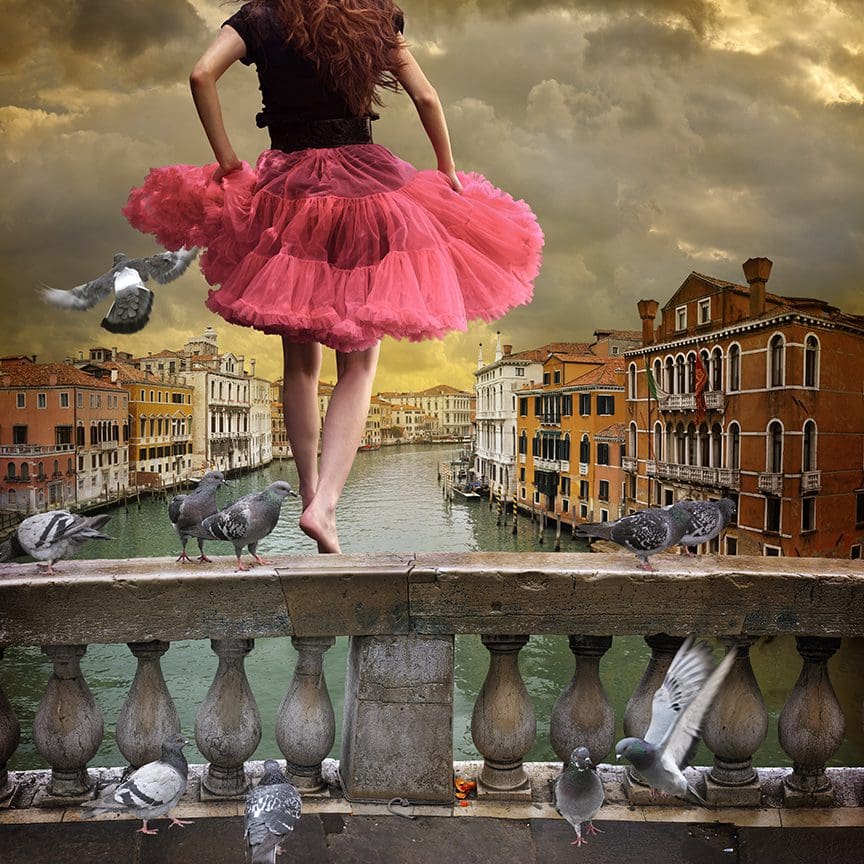
When did you start taking photographs?
TC: I started taking photos in my early twenties during my travels in the Navy and later hitch-hiking around the USA and Canada. During art school my photography took more of a fine arts approach. My photography professor was a major influence. He had been part of the 60’s art scene in NYC, a friend of Andy Warhol, and pushed me to create off-the-wall, edgier work.
When Photoshop software was released in the early 1990’s, I could see the potential for using the digital tools as a fine arts application. At that time I was working for an ad agency as a designer where I had access to all the new “cutting-edge” computers and software. There I learned to use the digital tools to push my analog photography toward a narrative direction.
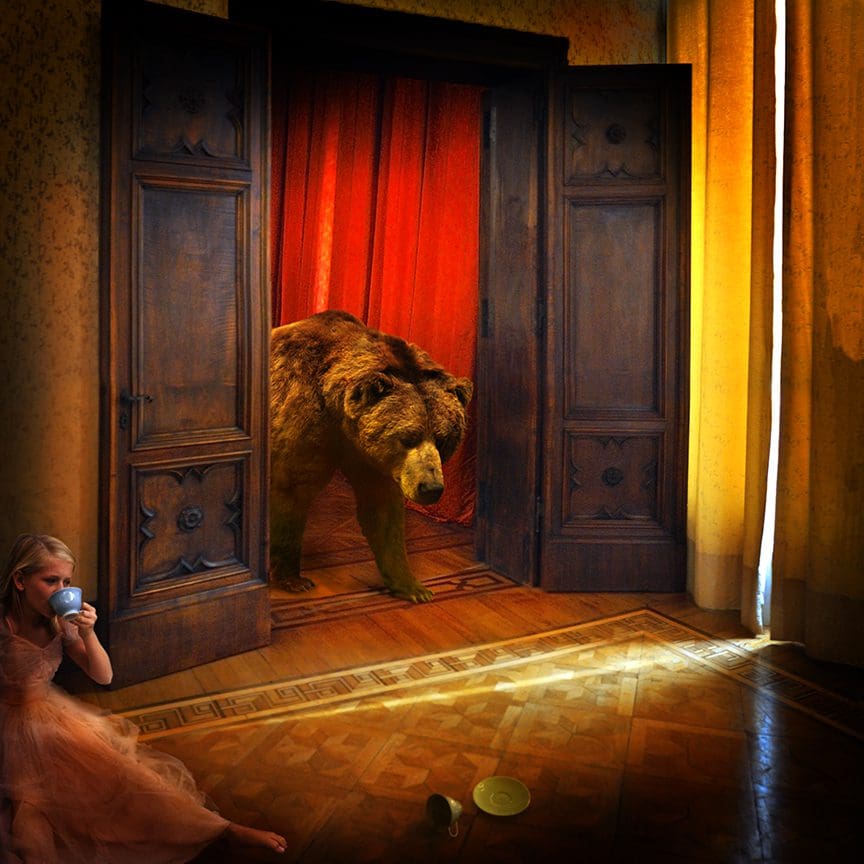
Describe your creative process. Do you let chance take a role?
TC: My creative process could take many different directions. Generally, an idea for an image will come to me when I’m very relaxed, as I’m drifting off to sleep or listening to music. At this point I will grab a pencil and paper and sketch a quick drawing of the idea so that I remember it later. I photograph each element, landscape, children and animals, and then download the photos to my computer where I construct the image.
My image can also change direction as I’m working, so it’s best for me to stay in the zone where ideas flow. The final image should look seamless when it’s printed onto archival paper with pigment inks.
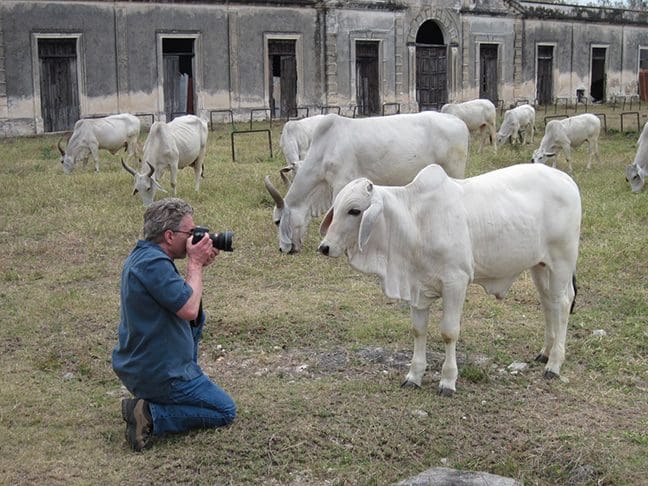
What are sources of inspiration or influence in your work?
TC: Inspiration doesn’t typically come from other photography but comes to me mostly through travel and exploring different cultures. When traveling I stay away from organized trips, instead setting my own pace, and placing myself in close contact to the people and their art.
Music, film and literature can also be a major source of inspiration. I’m especially influenced by the magic realism writers and film directors: Guillermo del Toro, Isabel Allende, Toni Morrison and Gabriel Garcia Márquez.
Growing up painters were a huge influence in my family of artists. My grandfather was an illustrator who was a part of the Brandywine school. According to my grandfather, NC Wyeth visited our family farm and brought along his “quiet son” Andrew. Andrew Wyeth’s paintings have always moved me with their undercurrent of emotion. Other contemporary painters of influence are Andrea Kowch, Odd Nerdrum, and Lucian Freud.
Playing music in my studio adds to the “color” of my images.
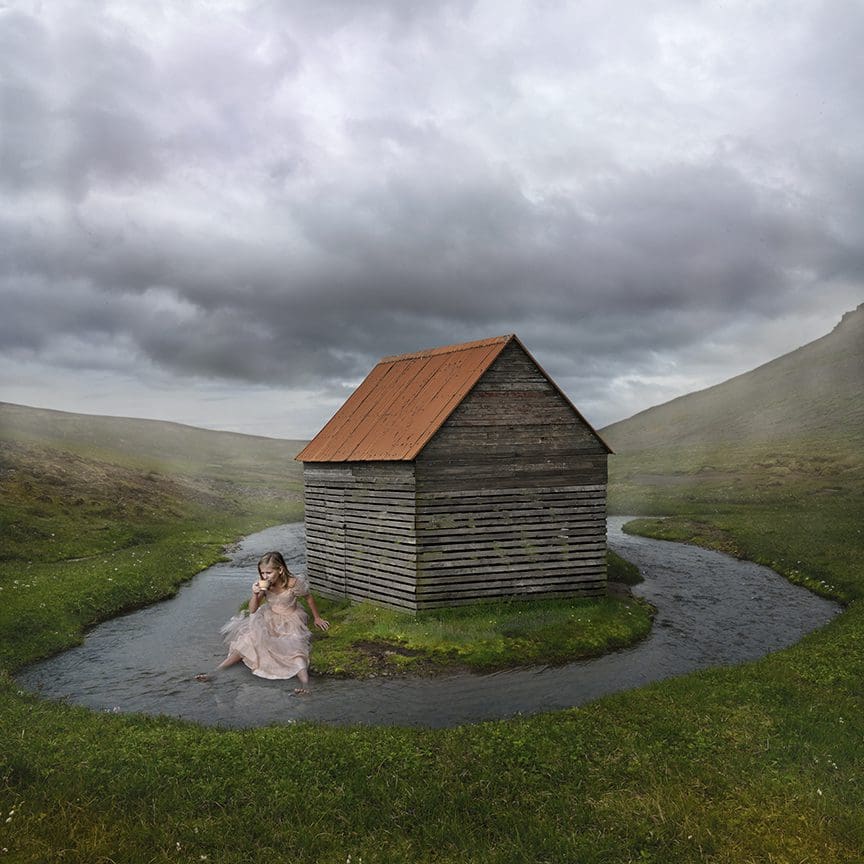
How has your work evolved over the years?
TC: Although the subject matter has stayed the same, my work has become somewhat more figurative. In my most recent series Tales of Heroines, I present full-length portraits of girls and young women who are directly facing the camera. I find it exciting how the eyes and face of a subject can draw you in. Over time my images have become more painterly, which is a nod to the many painters who have influenced my work.
What’s your favorite thing to do when you’re not taking photographs?
TC: Travel, travel, travel. Travel feeds the soul.
View our collection of work by Tom Chambers online, or visit us at the gallery to see them in person.

